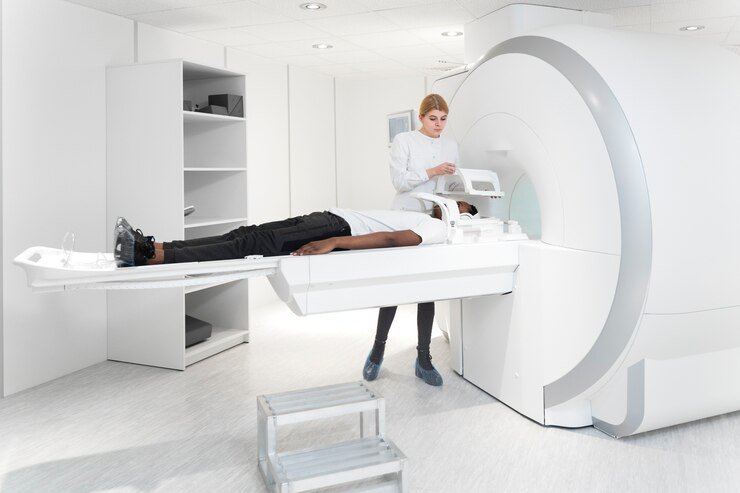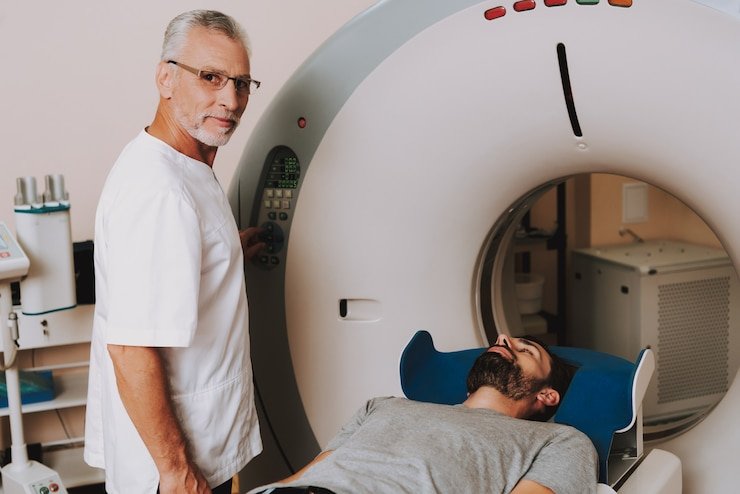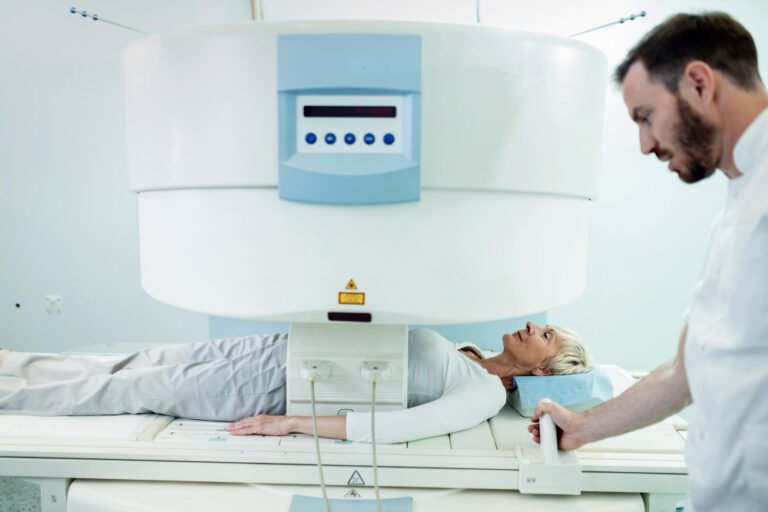Harnessing Healing Rays: The Evolution and Efficacy of Radiation Therapy.
Radiation therapy stands as a cornerstone in the treatment of cancer and various other medical conditions. Utilizing high-energy beams of radiation, this modality targets and destroys cancer cells or abnormal tissues, offering patients a potent weapon in their fight against disease. From its inception to modern advancements, radiation therapy has undergone remarkable evolution, demonstrating its efficacy, precision, and indispensable role in modern medicine. This article aims to explore the principles, applications, and transformative impact of radiation therapy in the realm of healthcare.
To Know More About It Please Click Here
Understanding Radiation Therapy
Radiation therapy, also known as radiotherapy or radiation oncology, involves the use of ionizing radiation to treat cancer and certain non-cancerous conditions. The primary goal of radiation therapy is to destroy cancer cells or inhibit their growth while minimizing damage to surrounding healthy tissues.
Types of Radiation Therapy:
- External Beam Radiation Therapy (EBRT): In EBRT, radiation is delivered from an external machine outside the body, targeting the tumor with precision while sparing nearby healthy tissues. Techniques such as intensity-modulated radiation therapy (IMRT) and stereotactic body radiation therapy (SBRT) allow for highly conformal dose delivery.
- Internal Radiation Therapy (Brachytherapy): Brachytherapy involves the placement of radioactive sources directly into or near the tumor site. This approach delivers a high dose of radiation to the target area while minimizing exposure to surrounding tissues.
- Systemic Radiation Therapy: Systemic radiation therapy, also known as radionuclide therapy or radioisotope therapy, involves the administration of radioactive substances, either orally or intravenously, which selectively accumulate in target tissues, delivering radiation internally to cancer cells.
Applications of Radiation Therapy
Radiation therapy is utilized in the treatment of various cancers and non-cancerous conditions, including but not limited to:
- Cancer Treatment: Radiation therapy is used as a primary treatment modality for certain types of cancer, including prostate cancer, breast cancer, lung cancer, head and neck cancer, and brain tumors. It may also be employed as adjuvant therapy following surgery or in combination with chemotherapy.
- Palliative Care: Radiation therapy is used to alleviate symptoms and improve the quality of life in patients with advanced or metastatic cancer, providing pain relief and symptom control by shrinking tumors or reducing tumor-related complications.
- Non-Cancerous Conditions: Radiation therapy is employed in the treatment of non-cancerous conditions such as benign tumors, arteriovenous malformations, keloids, and hyperthyroidism, among others.
Advancements in Radiation Therapy
Advancements in radiation therapy have significantly enhanced treatment outcomes and patient experiences:
- Image-Guided Radiation Therapy (IGRT): IGRT utilizes advanced imaging techniques, such as CT scans or MRI, to precisely visualize the tumor and surrounding anatomy in real time, allowing for accurate targeting and delivery of radiation.
- Intensity-Modulated Radiation Therapy (IMRT): IMRT delivers radiation with varying intensities and angles, sculpting the radiation dose to conform to the shape of the tumor while sparing adjacent healthy tissues, thereby minimizing side effects.
- Stereotactic Radiosurgery (SRS) and Stereotactic Body Radiation Therapy (SBRT): SRS and SBRT deliver high doses of radiation with pinpoint accuracy, typically in one to five treatment sessions, making them ideal for treating small tumors or metastatic lesions with minimal impact on surrounding tissues.
- Proton Therapy: Proton therapy delivers radiation using protons instead of photons, allowing for precise targeting of tumors while minimizing radiation exposure to healthy tissues, particularly in sensitive areas such as the brain or spinal cord.
Side Effects and Management
While radiation therapy is generally well-tolerated, it can cause side effects, including fatigue, skin irritation, nausea, and potential long-term effects such as radiation fibrosis or secondary cancers. Patient care teams work closely with individuals undergoing radiation therapy to manage side effects and optimize treatment outcomes, providing supportive care and symptom management as needed.
To Know More About it Please Click Here
Conclusion
Radiation therapy represents a powerful and indispensable tool in the treatment of cancer and various other medical conditions. Through its evolution and advancements, radiation therapy continues to offer patients effective and targeted treatment options, improving outcomes and quality of life for countless individuals worldwide. As research and technology progress, radiation therapy remains at the forefront of oncology and medical innovation, holding promise for continued advancements and improved patient care in the years to come.








